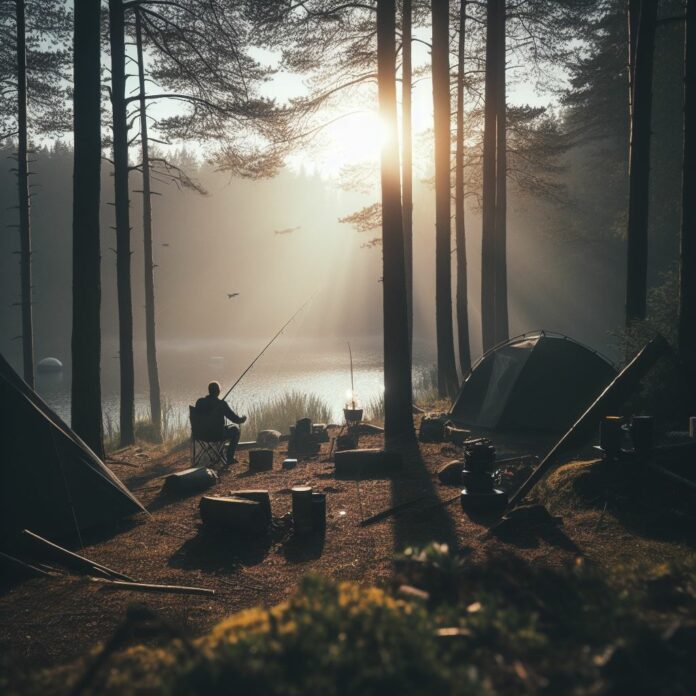Planning an outdoor adventure on a budget requires careful consideration and research.
By exploring affordable destinations, opting for budget-friendly transportation and accommodation options, being smart about gear and equipment purchases, planning meals wisely, seeking out low-cost activities, and prioritizing safety, you can enjoy a fulfilling and unforgettable outdoor adventure without straining your finances.
Embrace nature, create lifelong memories, and make the most of your budget-friendly outdoor adventure experience.
Research and Destination Selection
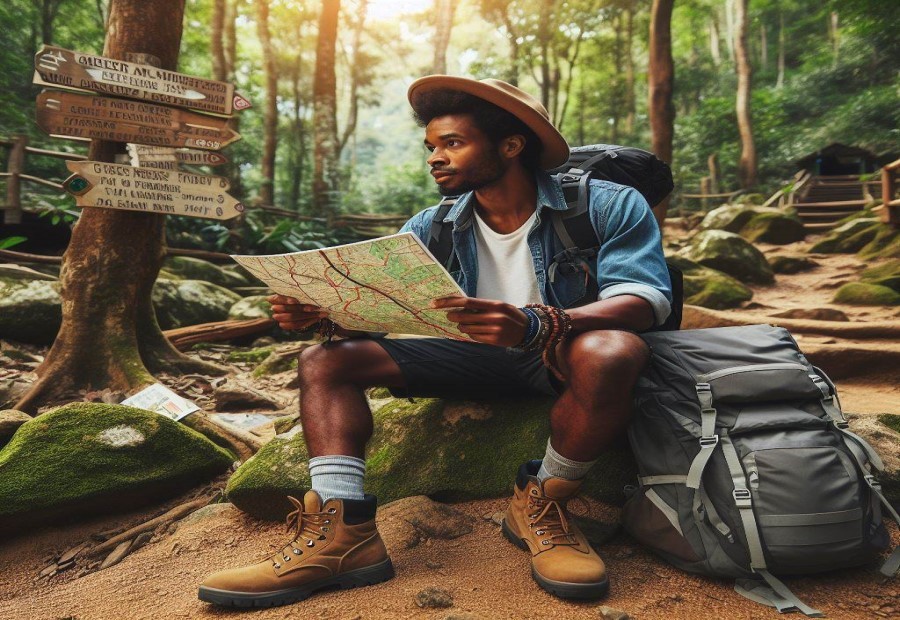
Researching Affordable Outdoor Destinations
Researching affordable outdoor destinations is an essential step in planning a budget-friendly outdoor adventure. Here are some tips for finding affordable options:
1. Start by conducting thorough research on different outdoor destinations that offer a range of outdoor activities and attractions at affordable prices.
2. Consider exploring local and state parks, which often have lower entrance fees and can provide beautiful natural scenery and recreational opportunities.
3. National parks and public lands are also worth considering as they offer affordable entrance fees and opportunities for hiking, camping, and wildlife watching.
4. Look for destinations that offer budget-friendly transportation options. Opting for road trips can be an economical choice, allowing you to explore different destinations at your own pace.
5. Utilize public transportation whenever possible as it can be a cost-effective way to reach your destination and explore the surrounding areas.
6. Consider carpooling or ride-sharing with friends or fellow adventurers to share transportation costs and make the journey more enjoyable.
With careful planning and research, you can find amazing outdoor destinations that don’t break the bank.
Considering Local and State Parks
When considering local and state parks for a budget-friendly outdoor adventure, you’ll find that they provide affordable access to beautiful natural environments and outdoor activities. These parks often offer low entrance fees or are completely free, making them a cost-effective choice.
Additionally, local and state parks provide various amenities such as hiking trails, campgrounds, picnic areas, and wildlife viewing opportunities. By choosing to visit these parks, you not only support your community but also contribute to the preservation of nearby natural areas.
Moreover, exploring local and state parks allows you to connect with your region’s culture, history, and unique landscapes. These parks frequently host events and programs that both educate and entertain visitors.
Exploring National Parks and Public Lands
When exploring national parks and public lands, it is important to consider several key aspects in order to fully enjoy the experience.
- Plan ahead: Research the specific national park or public land you intend to explore. Understand the rules and regulations, as well as any permits or fees required for entry.
- Trail selection: National parks and public lands offer a variety of trails suitable for different skill levels. Choose trails that align with your abilities and interests.
- Wildlife observation: National parks are home to diverse wildlife populations. Be respectful and maintain a safe distance when observing animals.
- Environmental responsibility: Preserve the natural beauty and resources of the national park or public land by practicing Leave No Trace principles. Pack out your trash, stay on designated trails, and respect the environment.
- Visitor centers: Take advantage of visitor centers or ranger stations within national parks. They provide valuable information, maps, and guided tours that can enhance your experience.
- Outdoor activities: National parks offer various outdoor activities such as hiking, camping, fishing, and wildlife viewing. Research and plan your activities accordingly.
- Weather conditions: Check the weather forecast before your visit to prepare for any potential changes in weather. Dress appropriately and carry necessary gear for the conditions.
- Photography opportunities: National parks and public lands provide stunning landscapes and natural beauty. Capture memorable moments and images while respecting the environment.
By considering these factors while exploring national parks and public lands, you can make the most of your adventure and create lasting memories.
Budget-Friendly Transportation Options
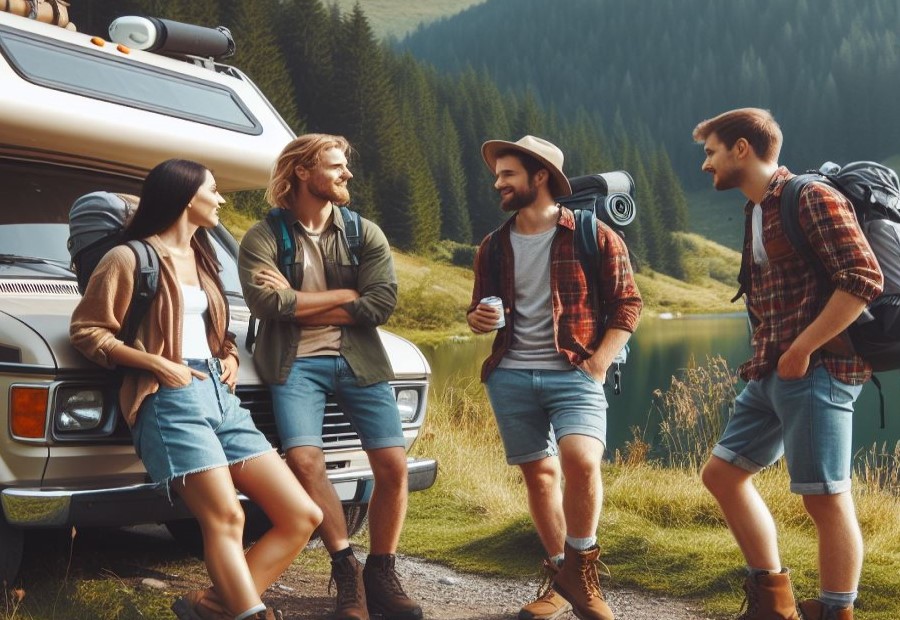
Opting for Road Trips
Opting for road trips is a cost-effective way to travel and explore new destinations. Road trips offer flexibility and the opportunity to visit multiple locations within a single trip. With careful planning, road trips can be an enjoyable and affordable adventure.
Here are some suggestions for opting for road trips:
1. Plan your route: Map out your itinerary, considering the distance between destinations and the time it takes to travel. This will help you budget for gas and estimate the travel time.
2. Choose fuel-efficient vehicles: Opt for a car with good mileage to save on fuel costs. Consider renting a car if your vehicle is not fuel-efficient.
3. Pack meals and snacks: Bringing your own food can save you money on meals during the trip. Pack non-perishable items, sandwiches, and healthy snacks to enjoy along the way.
4. Camp along the route: Camping is a budget-friendly accommodation option. Look for campsites along your route and enjoy the beauty of nature while saving on accommodation costs.
5. Take advantage of free attractions: Research and visit free attractions such as parks, beaches, or hiking trails. These offer opportunities for outdoor activities without additional expenses.
6. Share expenses: If traveling with friends or family, share the costs of fuel, accommodation, and meals. Splitting expenses can significantly save you money.
7. Avoid toll roads: Plan your route to avoid toll roads if possible. Using alternative routes can save you money on toll fees.
By opting for road trips, you have the freedom to explore various destinations while enjoying the adventure of the open road. With careful planning and budgeting, road trips can be an affordable and memorable way to travel.
So pack your bags, hit the road, and create lifelong memories.
Using Public Transportation
- Using public transportation is a budget-friendly option for getting to your outdoor destination.
- Public buses and trains are cost-effective ways to travel, especially for solo adventurers or small groups.
- You can save money on fuel, parking fees, and tolls by taking advantage of public transportation.
- Research the public transportation options available in the area you plan to visit before your trip.
- Check the schedules and routes to ensure they align with your travel plans.
- Public transportation can provide a convenient and stress-free way to reach hiking trails, camping sites, and other outdoor attractions.
- This option also allows you to relax and enjoy the scenery without the hassle of driving.
- Using public transportation can also be environmentally friendly, reducing your carbon footprint.
- If you’re concerned about carrying your gear, look for services that allow bikes or offer storage space.
- Make sure to have all your necessary gear, snacks, and water within reach during the journey.
Carpooling or Ride-Sharing
Carpooling or ride-sharing can be a great way to save money on transportation while planning a budget-friendly outdoor adventure. By splitting the cost of fuel and tolls with other travelers, you can significantly reduce your expenses.
Not only does carpooling or ride-sharing help you save money, but it also contributes to reducing traffic congestion and the carbon footprint.
To find carpooling or ride-sharing options, you can utilize online platforms or apps that connect drivers and passengers heading in the same direction. These platforms typically allow you to specify your departure location, destination, and preferred time of travel.
Additionally, you can communicate with potential co-travelers to ensure a comfortable and safe journey.
Accommodation on a Budget
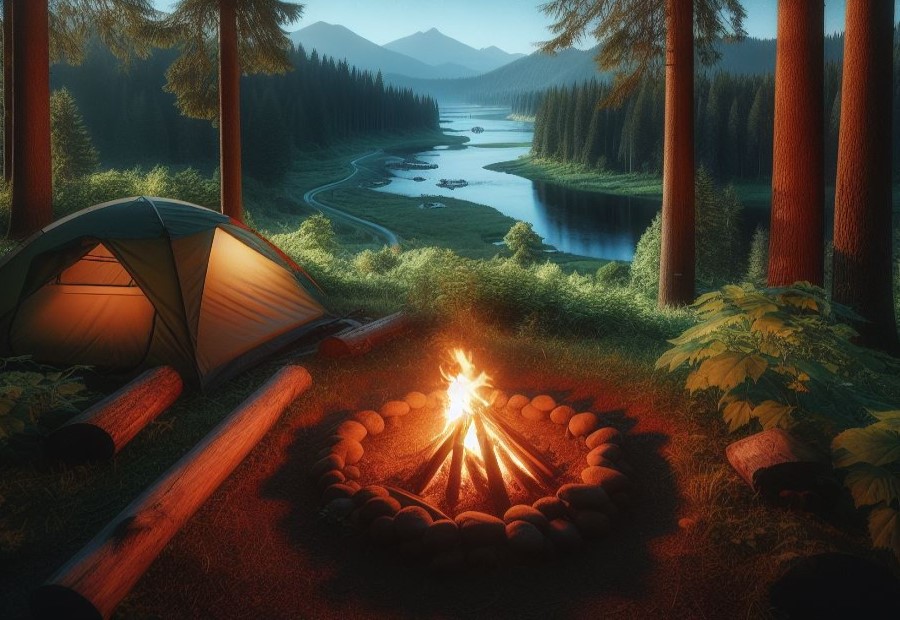
Camping and Backpacking
When it comes to planning a budget-friendly outdoor adventure, camping and backpacking are excellent options. These activities not only allow you to connect with nature but also save you money on accommodation.
- Camping: Camping is a cost-effective way to experience the great outdoors. All you need is a tent, sleeping bags, and other camping essentials. Many campsites offer affordable or even free camping options. Research and choose a campground that fits your budget.
- Backpacking: Backpacking involves carrying all your camping gear and supplies in a backpack while hiking or walking in nature. It allows you to explore remote and beautiful locations without the need for expensive accommodation. Invest in lightweight and functional backpacking gear to make your trip comfortable.
Renting an Affordable Cabin or Vacation Home
Renting an affordable cabin or vacation home is a fantastic choice for those seeking budget-friendly accommodation during their outdoor adventure. By choosing a cabin or vacation home rental, you can enjoy the comforts and privacy of a home away from home without breaking the bank.
Renting provides the opportunity to have ample space for your group or family, with multiple bedrooms and common areas where you can relax and unwind after a day of outdoor activities.
Additionally, many affordable cabin or vacation home rentals are situated in stunning natural settings, allowing you to fully immerse yourself in the outdoor experience.
Renting an affordable cabin or vacation home offers a cost-effective and comfortable base for your outdoor adventure. Whether you’re hiking, kayaking, or simply exploring the surrounding nature, having a cozy place to return to will enhance your overall experience.
Staying in Budget-Friendly Hostels
When planning a budget-friendly outdoor adventure, staying in budget-friendly hostels can be a great option. Consider the following:
- Cost-effective accommodation: Staying in a budget-friendly hostel is often much cheaper than booking a hotel room. Budget-friendly hostels offer dormitory-style rooms with shared facilities, allowing you to save money on accommodation expenses.
- Social atmosphere: Budget-friendly hostels provide an opportunity to meet and connect with fellow travelers from around the world. Staying in budget-friendly hostels can enhance your outdoor adventure experience by exchanging travel tips and stories.
- Amenities and facilities: While budget-friendly, hostels still offer basic amenities such as comfortable beds, common areas, communal kitchens, and laundry facilities. Some budget-friendly hostels also have additional amenities like free Wi-Fi and organized activities.
- Centrally located: Many budget-friendly hostels are situated in convenient locations, close to outdoor activities, hiking trails, or public transportation. This ensures easy access to your desired destinations without spending extra on transportation.
Outdoor Gear and Equipment
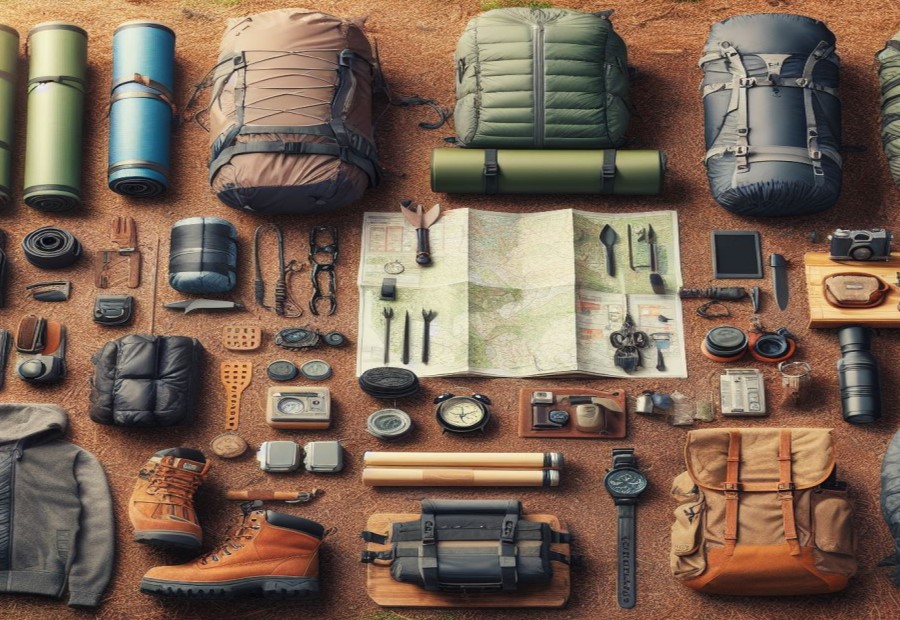
Borrowing or Renting Gear
When planning an outdoor adventure on a budget, one option to consider is borrowing or renting gear. This can help you save money and make your trip more affordable.
Here are some key points to keep in mind:
- Borrowing gear: If you have friends or family who enjoy outdoor activities, reach out to them and see if you can borrow the gear you need. This could include tents, sleeping bags, cooking equipment, or hiking gear. Borrowing from someone you trust can be a great way to access quality gear without having to spend any money.
- Renting gear: If you don’t have anyone to borrow from or if you need specific equipment that isn’t available to you, renting gear is a good alternative. Many outdoor gear shops or online platforms offer rental services where you can rent items for a specific duration. This is especially useful for items that you may only need for one trip or if you want to try out gear before making a purchase.
- Cost considerations: When borrowing or renting gear, be sure to factor in the cost of borrowing or renting into your overall budget. Compare prices between different rental options to get the best deal. Additionally, consider the condition and quality of the gear you are borrowing or renting to ensure it meets your needs and will enhance your outdoor experience.
- Return policies: Before borrowing or renting gear, familiarize yourself with the rental shop’s return policies. Make sure you understand any fees or penalties for damaged or lost gear. Taking proper care of the borrowed or rented equipment and returning it in good condition will help you avoid extra charges.
By borrowing or renting gear, you can have the equipment you need for your outdoor adventure without breaking the bank. Remember to plan ahead, choose reputable rental sources, and take good care of the gear to make the most of this budget-friendly option.
Buying Second-Hand Equipment
When planning an outdoor adventure on a budget, buying second-hand equipment can be a cost-effective option. Here are some reasons why:
- Affordability: Purchasing second-hand equipment is often significantly cheaper than buying new. You can find quality gear at a fraction of the original price.
- Variety: Second-hand markets offer a wide range of outdoor equipment options, from tents and backpacks to hiking boots and camping stoves. You’re likely to find exactly what you need.
- Sustainability: Opting for used gear helps reduce waste and promotes sustainability by giving items a second life. It’s a more eco-friendly choice compared to buying new equipment.
- Tested and reliable: Pre-owned gear has often been tried and tested in the great outdoors, so you can have confidence in its reliability and performance.
- Upgrade opportunities: Buying second-hand equipment allows you to try a brand or model that you may not have considered otherwise. It’s an opportunity to explore different options within your budget.
Meal Planning and Food Options

Packing Meals and Snacks
For packing meals and snacks on a budget while planning an outdoor adventure, here are some tips:
1. Plan your meals in advance to ensure you pack enough food for the duration of your trip.
2. Choose lightweight and non-perishable food items that are easy to pack and won’t spoil quickly.
3. Pack a variety of snacks such as granola bars, trail mix, and dried fruits to keep you energized during your outdoor activities.
4. Consider making your own meals and snacks at home to save money. Preparing items like sandwiches, wraps, and homemade energy bars can be cost-effective.
5. Invest in reusable containers and ziplock bags to store your food items. This will help keep them fresh and avoid any spills or messes.
6. If you’re camping or backpacking, bring a portable stove or grill to cook meals on-site. This will give you more flexibility in terms of food options and save you money on eating out.
Cooking at Campsites
When cooking at campsites, there are several steps you can follow to have a successful and enjoyable experience.
- Plan your meals: Before your camping trip, make a meal plan and decide what dishes you want to cook at the campsites. This will help you determine the ingredients and equipment you need to bring.
- Prepare ingredients: Pre-cut and pre-measure ingredients at home to make cooking at the campsites easier and more efficient. Store them in sealed containers or resealable bags for easy transport.
- Bring the right cooking equipment: Depending on the dishes you plan to cook, bring suitable cooking equipment such as a portable stove, grill, or Dutch oven. Don’t forget fire safety equipment.
- Choose easy recipes: Opt for recipes that are simple and require minimal preparation and cooking time. One-pot meals, foil-wrapped packets, and skewered dishes are great options for campsite cooking.
- Use local ingredients: Take advantage of the local environment by using fresh ingredients found near your campsite. This can enhance the flavor of your dishes and add a unique touch to your meals.
- Cook over the campfire: Embrace the camping experience by cooking some meals over the campfire. Roasting marshmallows, grilling vegetables, and making foil-wrapped dinners are fun and delicious options.
- Practice proper food safety: Ensure proper food storage and handling to prevent foodborne illnesses. Keep perishable items chilled in a cooler, and separate raw meats from other ingredients.
- Clean up and leave no trace: After cooking, clean up your cooking area and properly dispose of any food waste. Follow Leave No Trace principles to minimize your impact on the environment.
Exploring Affordable Local Food Options
When exploring affordable local food options during your outdoor adventure on a budget, consider the following:
- Look for food trucks or stalls: These often offer delicious and affordable meals prepared with local ingredients. Plus, they provide a chance to try unique dishes.
- Explore local markets or farm stands: These can be great places to find fresh produce, bread, cheese, and other local food items at reasonable prices.
- Visit ethnic or street food neighborhoods: These areas often have small, family-run restaurants or food vendors serving affordable and flavorful dishes from different cuisines.
- Check out local cafés and diners: These establishments are usually more budget-friendly than upscale restaurants but still offer a variety of tasty options.
- Pack your own snacks and picnics: Bring along snacks like granola bars, dried fruit, and nuts, as well as sandwiches or salads for a budget-friendly meal option.
Pro-tip: Make it a point to interact with locals and ask for their recommendations on affordable food spots. They may suggest hidden gems that are not widely known but offer delicious and budget-friendly meals.
Activities and Entertainment
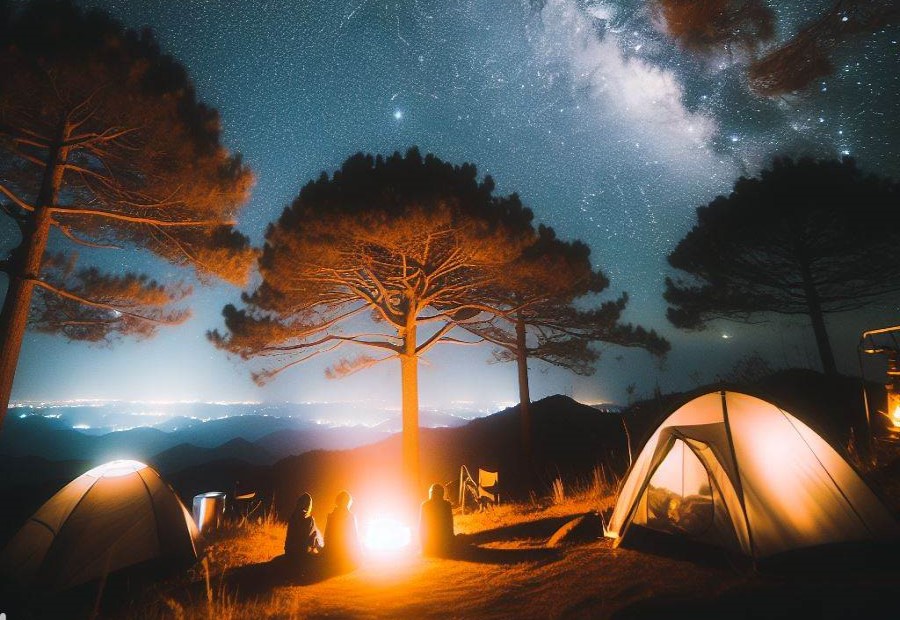
Free and Low-Cost Outdoor Activities
When planning a budget-friendly outdoor adventure, there are plenty of free and low-cost outdoor activities to consider:
- Take a hike: Explore nearby trails and nature reserves for free hiking opportunities.
- Go for a bike ride: Grab your bicycle and hit the local bike paths or explore scenic routes.
- Have a picnic: Pack a lunch and enjoy a picnic in a local park or beach.
- Go birdwatching: Discover the beauty of nature by observing different bird species in your area.
- Try geocaching: Join the treasure hunt and search for hidden caches using GPS coordinates.
- Stargaze: Grab a blanket, head to an open area away from city lights, and marvel at the night sky.
- Go fishing: Find a nearby lake or river and try your luck at catching fish.
- Visit a public garden: Explore botanical gardens or public parks with beautiful gardens.
- Go for a swim: Take a refreshing dip in a local swimming hole or lake.
- Attend local outdoor events: Check out community calendars for free concerts, festivals, or outdoor movie screenings.
Seeking Out Discounts or Special Offers
When planning a budget-friendly outdoor adventure, it’s essential to seek out discounts or special offers to save money. Here are some strategies to consider:
- Check for promotional codes or coupons: Before booking any activities or accommodations, make sure to search online for any available promotional codes or coupons that can provide discounts.
- Sign up for newsletters and loyalty programs: Many outdoor adventure companies offer special discounts and offers to their newsletter subscribers or loyal customers. It’s recommended to sign up for these programs to receive exclusive deals.
- Look for group discounts: If you’re planning to participate in activities with a group, don’t forget to inquire about group discounts. Some companies offer reduced rates for larger groups.
- Visit during the off-peak season: Outdoor adventure destinations often have peak and off-peak seasons. Consider traveling during the off-peak season to benefit from lower prices and better deals on accommodations, activities, and transportation.
- Follow social media accounts: Many companies advertise exclusive deals and offers through their social media channels. To stay updated on any special promotions, follow outdoor adventure companies on platforms like Facebook, Twitter, and Instagram.
- Consider package deals: Keep an eye out for tour operators or resorts that offer package deals comprising accommodations, activities, and meals at a discounted rate. These all-inclusive packages can help you save money on your outdoor adventure.
Safety and Preparedness
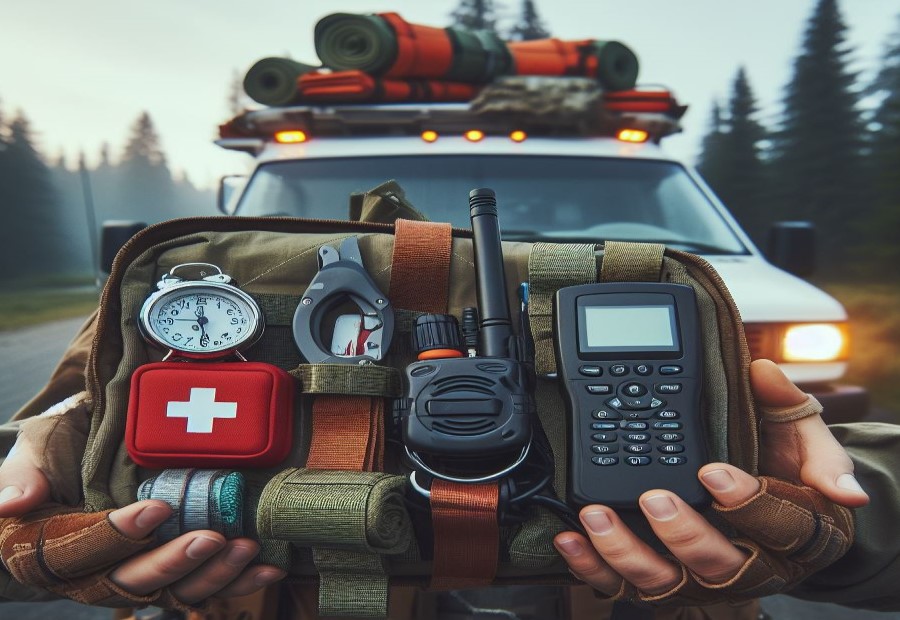
Researching and Understanding the Environment
Researching and understanding the environment is of utmost importance when planning an outdoor adventure. Through conducting comprehensive research, you can acquire valuable information that will enhance your experience and guarantee your safety.
To begin with, it is crucial to identify the climate and weather conditions of your chosen destination. Having knowledge about the temperature range, rainfall patterns, and any possible extreme weather events will enable you to pack appropriate clothing and gear accordingly.
Another important aspect is studying the terrain and topography of the area. By researching the landscape, you will get an idea of the difficulty level of hiking trails, the presence of water bodies, and the existence of any potential hazards such as cliffs or steep slopes.
Moreover, familiarizing yourself with the local flora and fauna is essential. Understanding the plant and animal life in the area will allow you to appreciate and respect the environment. Additionally, it is important to research any species that may pose a potential danger and learn how to handle wildlife encounters appropriately.
Furthermore, it is crucial to learn about any rules or regulations specific to the location. Many outdoor destinations have guidelines regarding camping, fishing, and other activities. Being aware of these rules will ensure that you abide by them and contribute to the sustainability of the area.
Lastly, it is important to research any potential risks or dangers in the environment, such as insect infestations or poisonous plants. Taking necessary precautions and being prepared to mitigate these risks is essential.
Packing Essential Safety Gear
When planning an outdoor adventure on a budget, it is crucial to prioritize safety by packing essential safety gear. Here is a list of some key items to include:
- A first aid kit: It is essential to have a well-stocked first aid kit that includes bandages, antiseptic wipes, pain relievers, and any necessary prescription medications.
- Navigation tools: Carry a compass, map, and GPS device to ensure you can navigate your surroundings accurately.
- Lighting equipment: Pack a reliable flashlight or headlamp with extra batteries to help illuminate your way, especially at night.
- Fire starters: Include waterproof matches, a lighter, or fire starter tools to help you start a fire for warmth, cooking, or signaling for help.
- Emergency shelter: Carry a lightweight and compact emergency blanket or tarp that can provide protection against the elements if you become stranded.
- Communication devices: Bring a fully charged cell phone or a two-way radio to stay connected with others in your group or for emergencies.
Informing Others about the Adventure Plans
Informing Others about the Adventure Plans is crucial to ensure everyone’s safety and coordination. Communicating the details of the trip helps in case of emergencies and allows others to provide support if needed.
Additionally, we informed a local park ranger about our itinerary. We provided them with our contact information and details of our hike. This allowed the ranger to be aware of our presence in the park and provide assistance if required.
Remember, informing others about your adventure plans is not just a responsible action but also a way to ensure you have a support system in place. Stay safe and happy exploring!
Frequently Asked Questions
1. How can I plan an outdoor adventure on a budget?
Planning an outdoor adventure on a budget requires proper planning and smart decisions. Here are some tips:
- Consider renting an RV to save on gas and lodging costs.
- Look for free camping sites and use smartphone apps to find affordable options.
- Shop at gas stations and grocery stores for supplies at lower prices.
- Take advantage of group discounts and explore destinations further away from home.
- Consider shopping at discount stores or second-hand shops for outdoor supplies.
- Use budgeting tools like YNAB, Clarity Money, or Albert to track your expenses and financial goals.
2. How can I save money on outdoor equipment and gear?
Buying outdoor equipment can be expensive, but there are ways to save money:
- Instead of buying new gear, consider using what you already have or buying secondhand.
- Rent outdoor gear for occasional use instead of purchasing.
- Check out platforms like the Buy Nothing Project to find free outdoor equipment from neighbors.
- Look for sales and discounts at discount stores or online retailers.
3. Are there any ways to enjoy camping and hiking without spending too much?
Yes, camping and hiking can be affordable hobbies. Here are some tips:
- Take advantage of fee-free days at public lands managed by federal agencies.
- Consider buying an America the Beautiful Pass to cover entrance fees at national parks.
- Check if your local library offers free passes for state parks.
- Opt for dispersed camping on public lands managed by the US Forest Service or Bureau of Land Management.
- Borrow or rent gear instead of buying new, if you don’t plan to use it frequently.
4. How can I manage my money effectively while planning outdoor adventures?
Managing money effectively is crucial for planning outdoor adventures. Consider these tips:
- Track your expenses and categorize them to see where your money is going.
- Set financial goals and regularly check in on your expenses and progress.
- Use budgeting tools like YNAB, Clarity Money, or Albert to manage your finances.
- Make your budget personal and fit your specific lifestyle and goals.
- Stay focused on your goals and incorporate them into your budgeting plan.
5. Where can I find affordable vacation destinations for outdoor adventures?
There are many affordable vacation destinations for outdoor adventures. Consider these options:
- Explore national parks such as Glacier National Park or the Grand Canyon.
- Visit less crowded destinations like Isle Royale National Park or Washington State’s San Juan Islands.
- Experience the beauty of cloud forests in Costa Rica, Jamaica, or Honduras.
- Consider guided river trips or sea kayaking in the Sea of Cortez or Iceland.
- Discover the North American golden slot canyons in Southern Utah.
6. How can I save money on travel costs for my outdoor adventures?
Travel costs can add up, but there are ways to save money on your outdoor adventures:
- Look for discounted plane tickets or consider traveling during off-peak seasons.
- Utilize vacation rentals or camping locations instead of expensive hotel stays.
- Take advantage of amenity fees waived on fee-free days at public agencies.
- Plan your adventures close to home to save on transportation expenses.
- Look for fuel and grocery discounts at gas stations and stores along your route.

